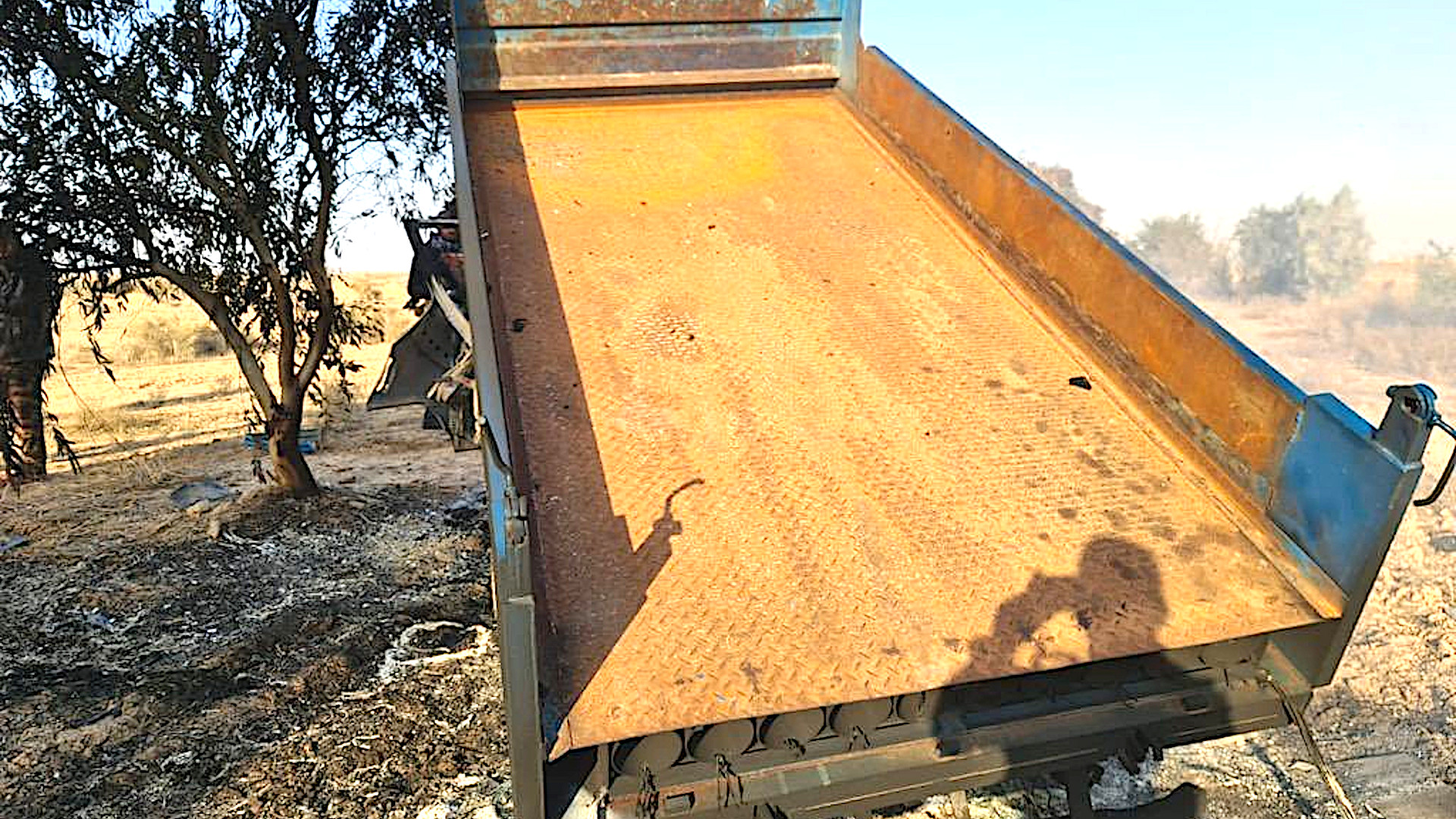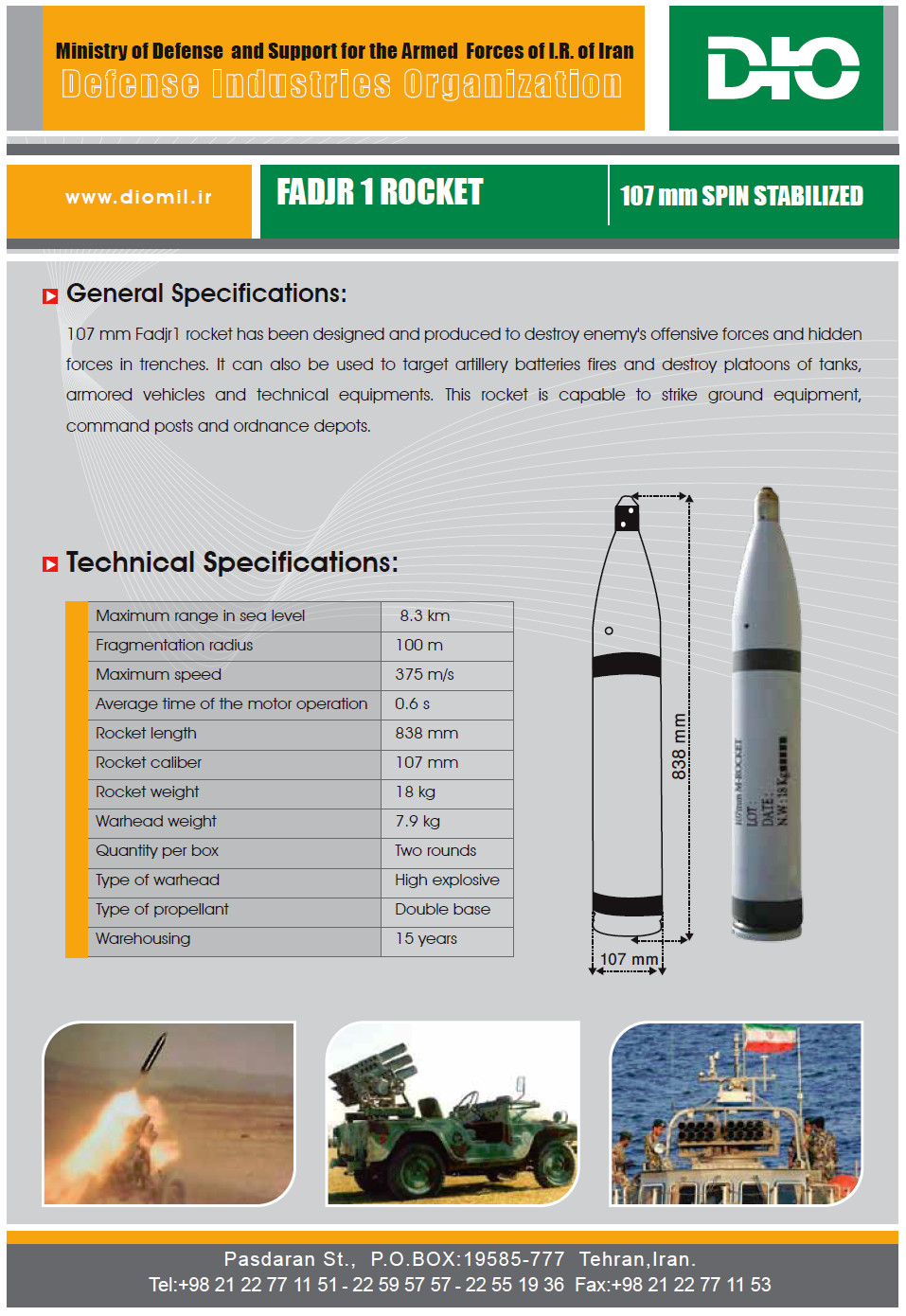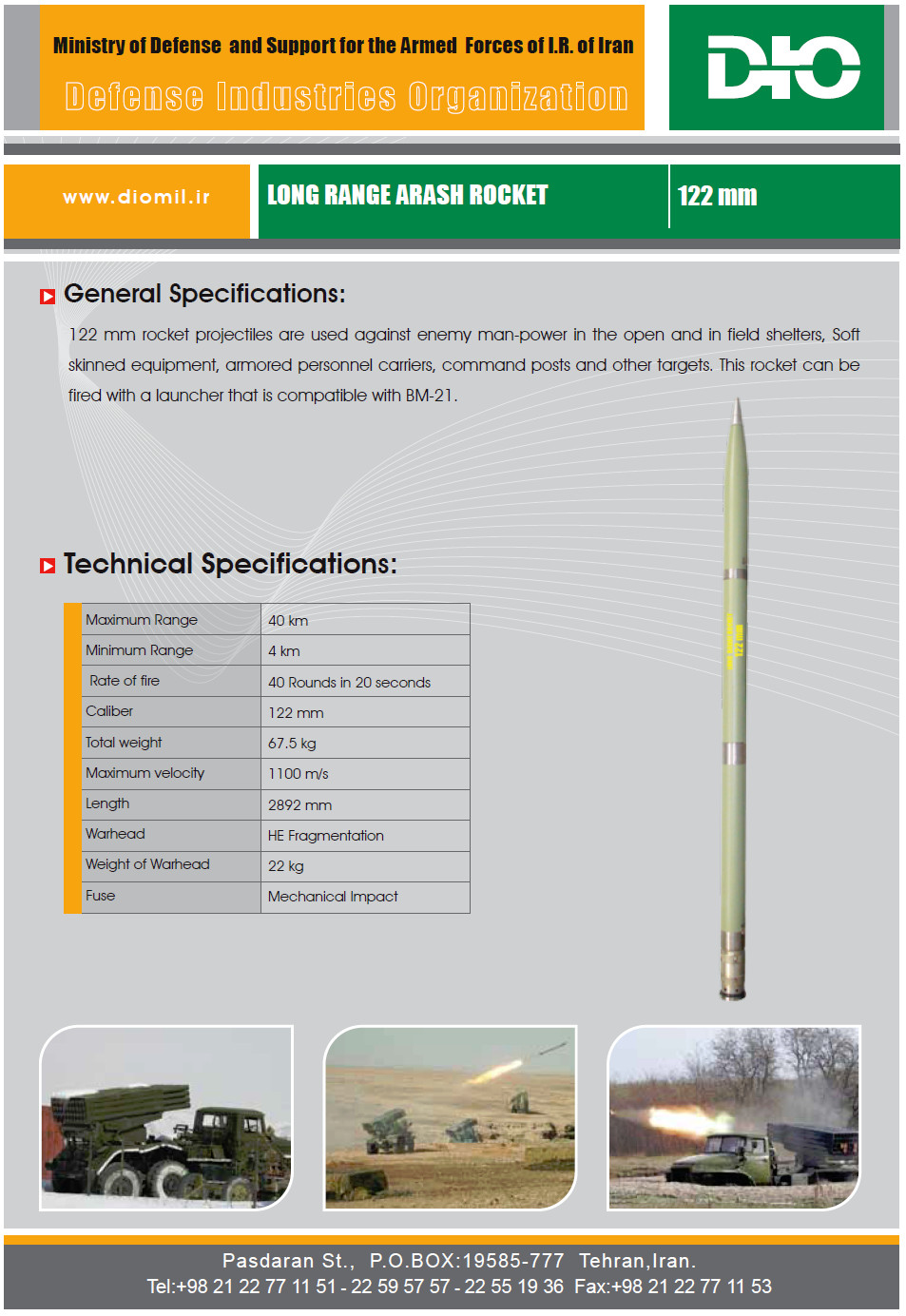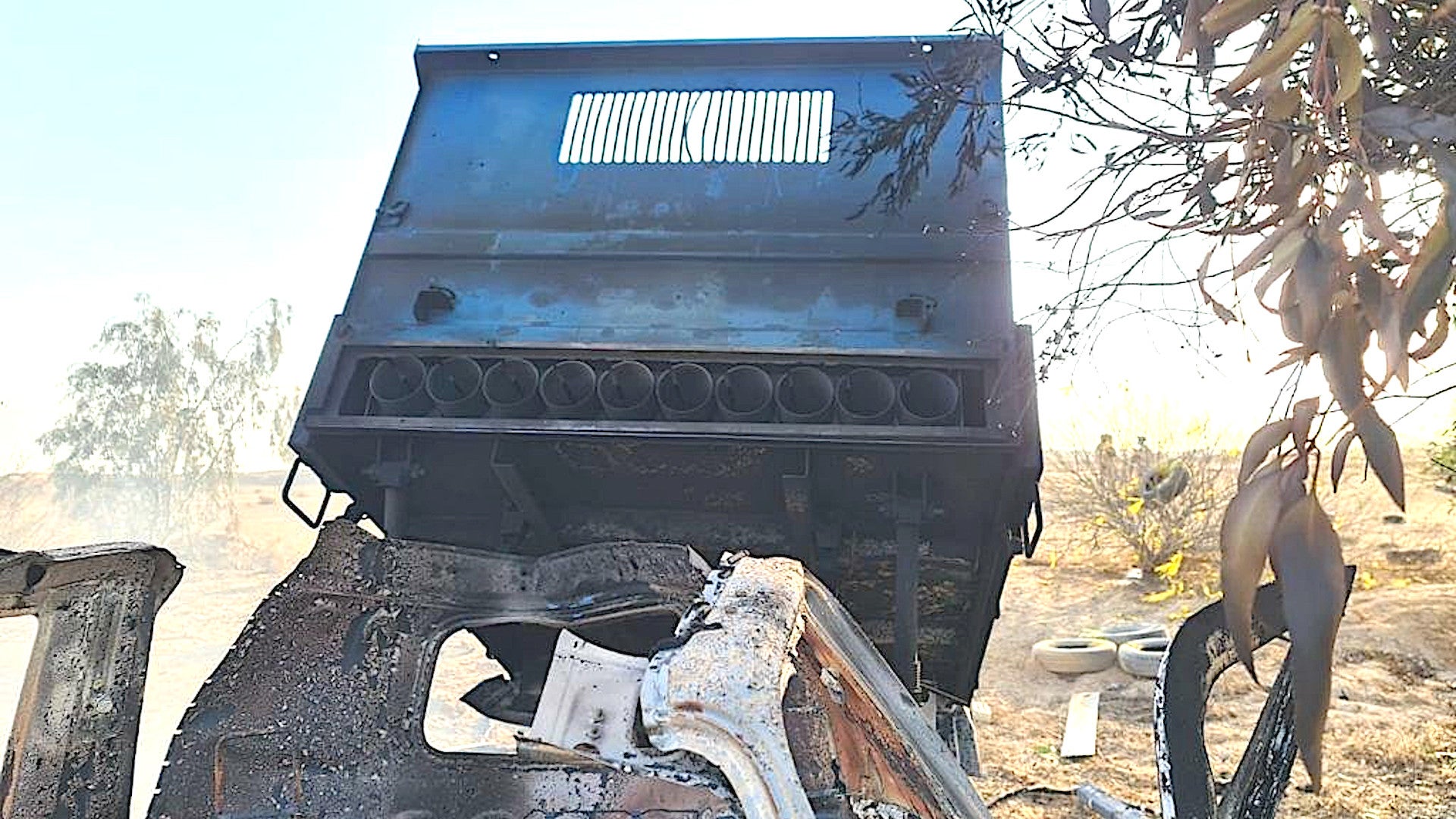A new attack aimed at a base in Iraq that hosts American troops looks to have been carried out using 122mm rockets with greater range and more destructive power than the 107mm types more typically employed in these incidents. This strongly indicates that Iranian-backed militias in the country were responsible, though the U.S. government has not yet blamed any specific group or groups. The rockets also do not appear to have killed anyone directly in this particular instance, but a contractor working for the U.S.-led coalition fighting ISIS in Iraq and Syria did suffer a heart attack and later died.
This latest rocket attack on Iraq’s Al Asad Air Base, which is a major hub for U.S. and other coalition forces, occurred at around 7:20 AM local time on March 3, 2021. This facility was also infamously the primary target of an unprecedented Iranian ballistic missile strike in January 2020. New details, as well as previously unseen video footage, about that incident just emerged this past weekend, which you can read about in more detail in this War Zone piece.

A total of 10 rockets hit the facility, according to U.S. Army Colonel Wayne Marotto, the top spokesperson for Combined Joint Task Force-Operation Inherent Resolve (CJTF-OIR), the official name of the international coalition battling ISIS. Beyond the one associated fatality, there have been no reports of any additional casualties, so far. U.S. Centurion Counter-Rocket, Artillery, and Mortar (C-RAM) defense systems, which you can read about in more detail in this War Zone piece, did engage the incoming threats, but it’s unclear how many may have been knocked down.
“Iraqi SF [security forces] are leading the response & investigation,” Marotto wrote on Twitter. “Further information will be released as it becomes available.”
“There are no current reports of U.S. servicemember injuries and all are accounted for,” the Pentagon said in a subsequent statement. “A U.S. civilian contractor suffered a cardiac episode while sheltering and sadly passed away shortly after.”
“Iraqi security forces are on scene and investigating,” it continued. “We cannot attribute responsibility at this time, and we do not have a complete picture of the extent of the damage.”
While it remains unclear who is responsible for this attack, it comes less than a week after President Joe Biden ordered airstrikes on a base that Iranian-backed Iraqi militias operate in neighboring Syria. Those strikes had been carried out in retaliation for a rocket attack last month on Erbil Airport, in the northern Iraqi city of the same name, which is the capital of the country’s semi-autonomous Kurdish region. That attack killed another coalition contractor and injured a U.S. service member, among other casualties.
When it comes to this new incident, the timing is notably unusual. Rocket attacks aimed at U.S. military and diplomatic sites in Iraq, as well as those where other coalition members operate from, which are generally linked to Iranian-backed militias, typically occur in the evening or overnight.
In addition, Sabreen News, an outlet linked to Kataib Hezbollah, one of Iraq’s largest Iranian-supported groups, among others, reported that the rockets used in this attack were Iranian-made 122mm Arash-4 types, also known as the Long Range Arash. The Arash-series is based on the Soviet-era 122mm artillery rocket family, variants of which remain in service worldwide and are most commonly associated with the truck-mounted Grad system.
Pictures of the remains of the rocket launcher employed in this new attack on Al Asad show features, especially the general size and length of the individual launch tubes, that would fit well with the reports of Arash-series rockets being employed in this incident. Per a brochure from Iran’s Defense Industries Organization (DIO), the Long Range Arash has a maximum range of 40 kilometers, or just under 25 miles, and a warhead weighing 22 kilograms, or around 48 and a half pounds.
The Long Range Arash is a significantly more capable rocket than the Iranian-made 107mm Fadjr-1, which has been a weapon of choice for Iranian-backed militias in Iraq for years now. The Fadjr-1 is an Iranian clone of a very popular Chinese design that first entered service in the 1960s and remains in widespread use around the world. The version Iran produces has a maximum range of just 8.3 kilometers, or just over 5 miles, and a warhead weighing 7.9 kilograms, or just under 17 and a half pounds, according to the DIO brochure.


The launcher used in the attack today was also concealed within a civilian truck, a tactic that is commonly seen in rocket attacks tied to Iranian-supported groups in Iraq, regardless of the type of weapon used. Photographs from the launch site show what looks to be a WiFi hotspot and a small camera, suggesting that the launch may have been recorded remotely, as well. Militant and terrorist groups regularly film attacks, including via small drones, for propaganda purposes. The apparent size of the rockets and the all-around sophistication of this setup all add weight to the involvement of Iranian-backed groups in this attack, as well.
This is not the first time that Arash-series rockets have reportedly been used in attacks against U.S. and coalition forces in Iraq. There were very strong indications that these weapons were used in another attack on Erbil in September 2020, including a launch point said to be approximately 40 kilometers from the points of impact. Later reports on that incident said the actual distance was shorter, which could have pointed to the use of shorter-range members of the Arash family that are still more capable than the Fadjr-1. At the same time, it’s worth noting that DIO says that the Long Range Arash can engage targets as little a 4 kilometers away, meaning that these rockets could still have been employed in that case, but at less than their maximum range.
No matter what, the use of longer-range rockets, together with the early-morning timing of this latest attack on Al Asad, would seem to suggest that Iranian-backed groups are looking to send a message to the United States about the actual size and scope of their capabilities, as well as their resolve. After the airstrikes on the militia base in Syria last week, the Pentagon said the goal had been to carry them out in a way specifically intended to try to avoid further escalation.
“One of the things we were certainly hoping to achieve as a result of that strike was to deter future attacks by militia groups on our people, our facilities and our Iraqi partners, and we certainly hope that it has that effect,” Pentagon Press Secretary John Kirby said during an off-camera press conference just yesterday. “There hasn’t been – since the – the strike last week, there hasn’t been any attacks by militia groups on our people and we – we hope that that remains the case.”
“You can’t act with impunity,” President Biden had told reporters last week in response to questions about the intent of the airstrikes in Syria. “Be careful.”
All of this comes as the Biden administration continues to try to focus on engaging Iran, especially over the controversial international deal regarding that country’s nuclear program, diplomatically. The actions of Iranian-supported proxies throughout the Middle East, particularly in Iraq and Yemen, have frustrated those efforts, but it’s not clear how much of this is a deliberate campaign on Iran’s part to strengthen its negotiating positions, especially on the issue of sanctions relief, versus an expression of local grievances. U.S. Marine Corps General Frank McKenzie, head of U.S. Central Command (CENTCOM), the top American military command overseeing operations in the Middle East, said in January that Iranian proxies are “generally responsive” to directives from Tehran, but also acknowledged that “not every entity at every level” always does as its told.
It also remains to be seen how Biden and his administration will respond to this latest rocket attack. The President has faced criticism from members of Congress, including individuals from his own Democratic Party, over the legality of the recent airstrikes in Syria.
From what we know so far about the attack today on Al Asad Air Base, especially the apparent use of more capable 122mm rockets, it certainly seems that whoever carried it out was looking to at least show their ability to escalate things, despite the U.S. government’s desire to prevent that from happening.
Contact the author: joe@thedrive.com
